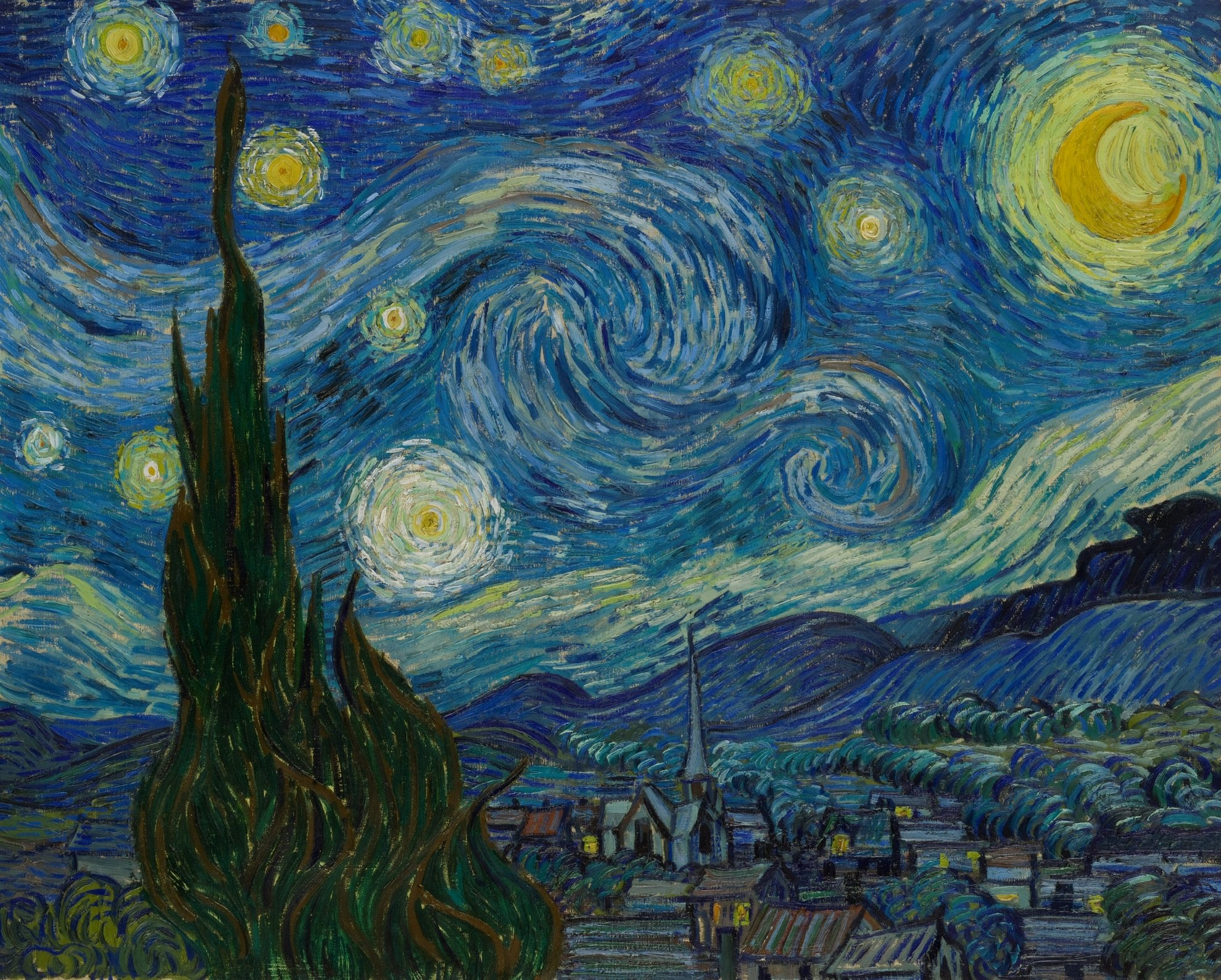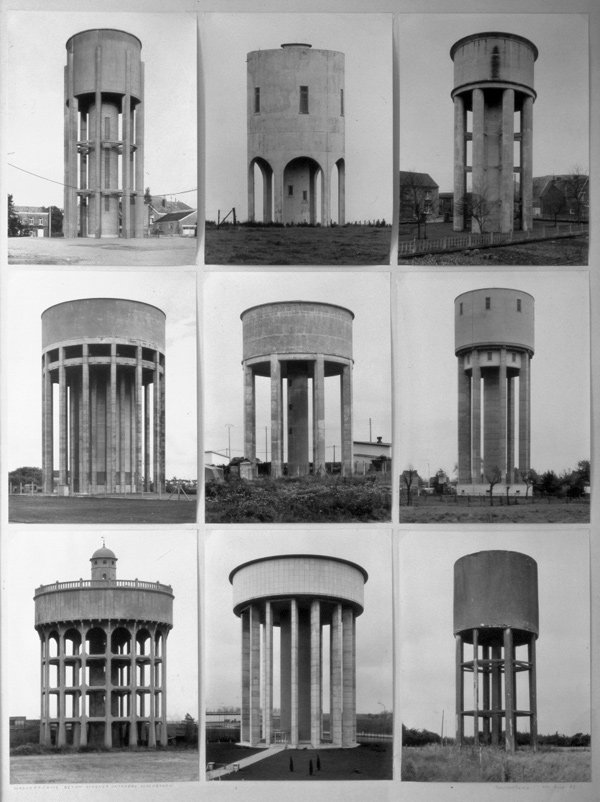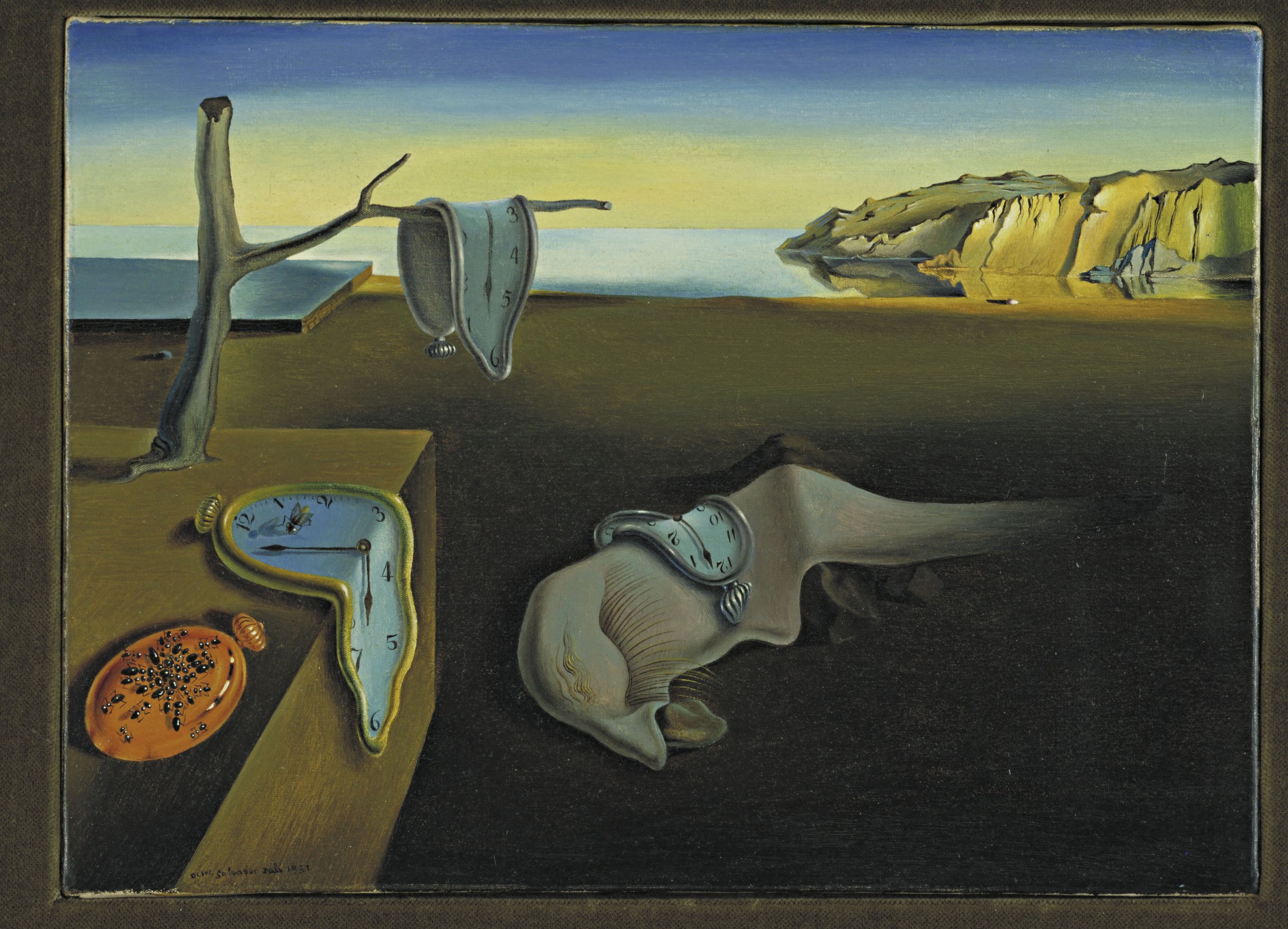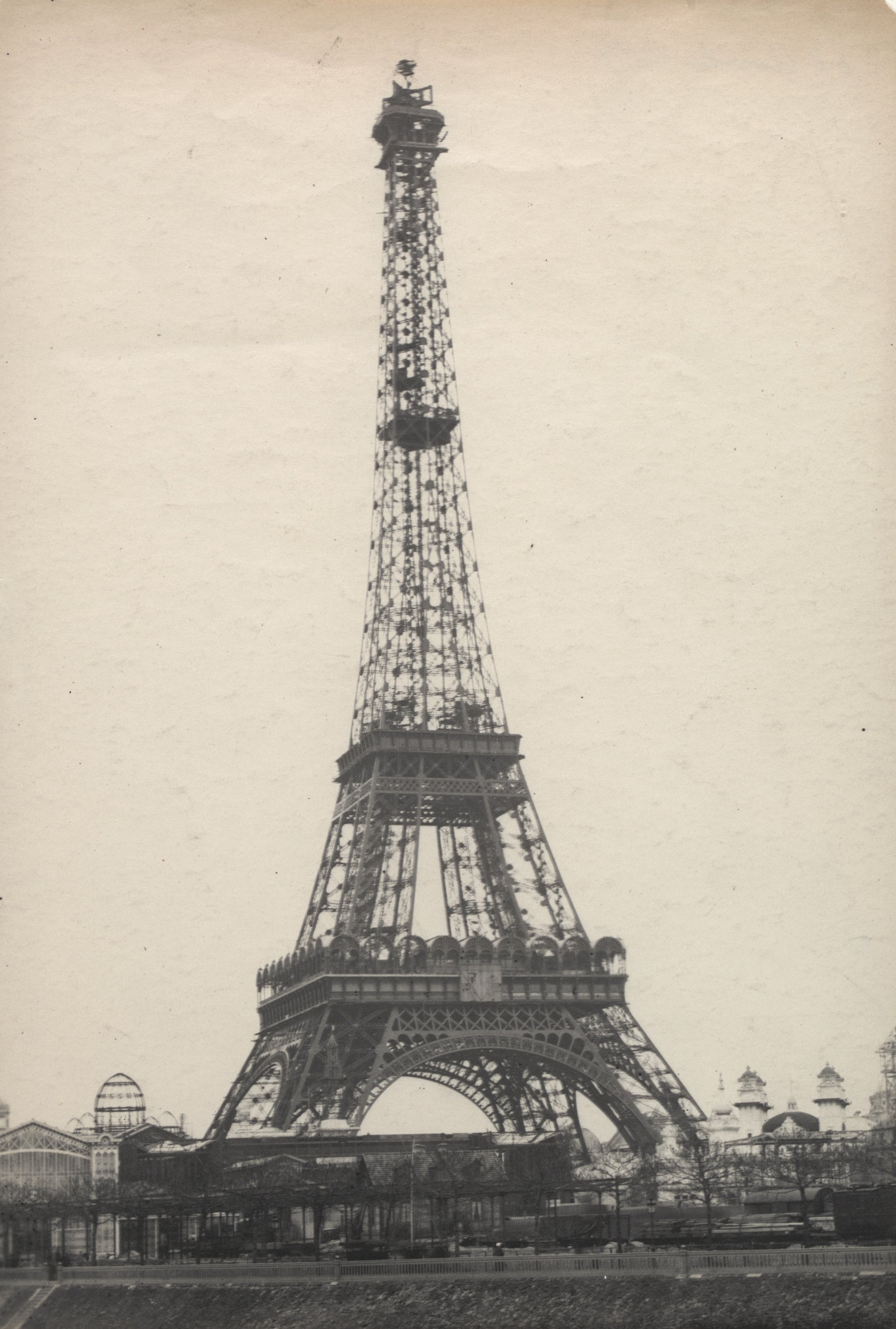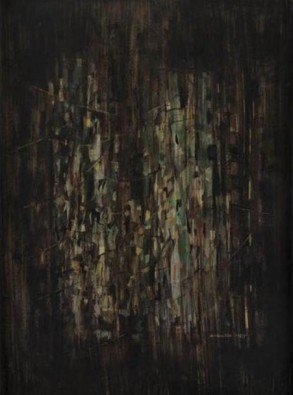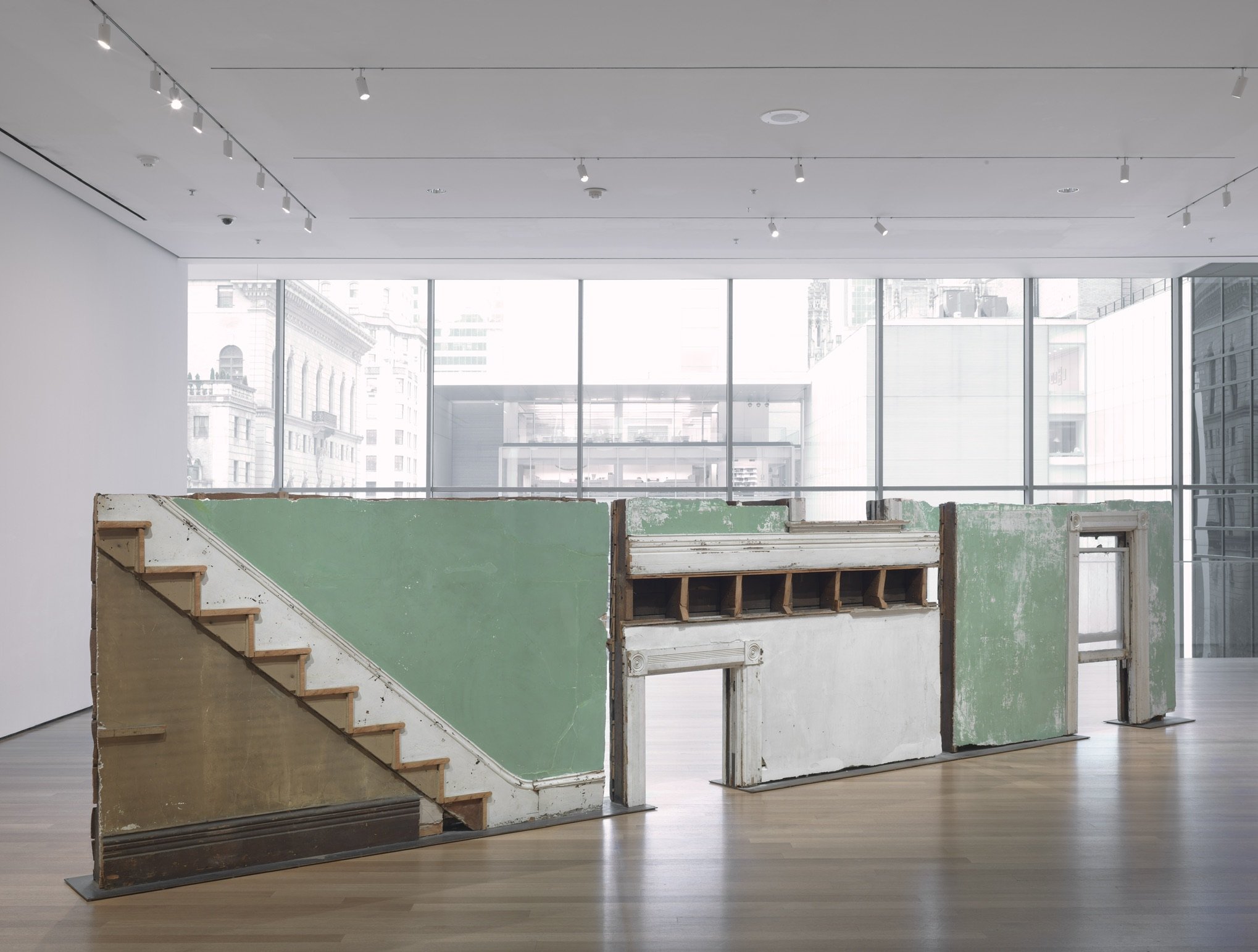Part 1 - Overview
1.1. Introduction to Places & Spaces
Discover some of the ways that artists represent place and take inspiration from their environment.
In this module, you will discover some of the different ways that artists represent place and use materials from their environment. This is an approachable theme, because it covers sights and structures that will be familiar to many. The introduction video is the place to begin. It focuses on three works of art—a star-filled landscape by Vincent van Gogh; a vision of New York City filtered through the abstraction of Piet Mondrian; and Gordon Matta-Clark’s sculpture made from pieces of a demolished home—through which you will explore this theme. The slideshow expands upon these artworks and features many more, ranging from Claude Monet’s immersive paintings of the water lilies in his beloved garden pond to a decades-long architectural project by Louis I. Kahn, which unfolded in the complex political environment of postcolonial Bangladesh.
Learning Objectives
Analyze how artists convey mood, emotions, and memories through the depiction of place.
Discover how artists draw attention to and create new perspectives on overlooked places or the objects and structures within them.
Create or find an image or artwork that expresses your experience of a particular place.
Discover some of the many ways artists represent place and take inspiration from their environment.
1.2. Places & Spaces
The introductory video to this topic is on the Museum of Modern Art’s YouTube Channel…
Artifact 1 - Video: MOMA. “How artists capture environments.” YouTube, 25 Sept 2015.
Part 2 - Look & Learn
Not all the videos from this course are on the Museum of Modern Art’s YouTube Channel, but I’ve tried to find a couple of videos online that relate to each artwork studied in the Coursera workshop, MODERN ART & IDEAS.
2.2. Vincent van Gogh. The Starry Night. 1889
Part 3 - Read & Review
3.3. Places & Spaces - Discussion Prompt
Think about a place you’ve visited in the past few weeks that had a strong effect on you. Consider the characteristics of the place that made it distinct, including the mood, environment, people who were around or with you, and your reason for being there. Create or find an image that expresses your experience of that place. Post the image here and explain your choice. Then, respond to another learner’s post that resonates with or interests you.
In the late afternoon of December 12, 2019, I was sitting in the parking lot of a local nursery I had just visited. Each fall, much of the inside and outside of this nursery gets transformed into a venue selling Christmas decorations as well as an assortment of artificial and real Christmas trees. It had rained heavily that afternoon, as it is oft to do in Metro Vancouver, British Columbia. The downpour had resulted in part of the nursery's parking lot to flood.
I remember being both tired and distraught as I hadn't been able to find a nice, new and large artificial tree to replace the old one my Mother and I had decided had finally bit the biscuit as it was now too worn out to be used, with half of it's lights not working and my attempt at replacing the old lights with new ones having failed as none of the new lights I had tried looked good on the old tree. As such, we agreed it was time to let it go, even though I think that is a waste in and of itself - that this tree would now end up in a landfill. It seems oddly representative of the waste created by our Western, consumer driven society, where things have to look just right. This was actually the sixth place I had been to that day, and none of the six stores had anything that didn't look like anything other than a plastic version of a real majestic tree. I think it was even more frustrating as I know there have been better trees made and sold in the past, as I had the remains of one strewn about my Mom's living room.
As I sat defeated in my car, I remember the sky was overcast. It was dusk and the dark cloudy sky had taken on a blackish-bluish-grey tone that felt a bit ominous to me. I was parked on the edge of the flooded area, and on one else had dared to try and park in the ankle high water, so there was a large distance between my car and the vehicle on the other side of the flooded area. I think I recall only one couple running across the parking lot to get to their car, during the ten minutes or so that I sat alone in my car. I felt alone even though there was a constant stream of cars on the highway to my right whizzing past me at speeds of 80 kmh and higher. The lights of those cars at dusk felt like they were blurred and obscured from the raindrops on my windshield. They felt surreal and foggy, emphasizing the banality and emptiness I was feeling in that moment. To my right, in the periphery of my eye I remember seeing the white Christmas lights hung on the outside of the nursery, in bushes and trees that lined the storefront and it felt like they were mocking me a bit.
Ultimately it wasn't a place that stood out because it was any place special. But what made it stood out was the feelings it stirred in me. Eventually, the banality and loneliness of the place prompted me to take a few photos as I sat their, which is something I'm apt to do being an artist.
Question from ART & IDEAS: TEACHING WITH THEMES - After you’ve gone through this process, describe how would you introduce this theme to your students. What question could you ask or what activity could you develop to give them an entry point into the theme?
I would introduce this theme to students by leading a discussion about places that are important and memorable to them. The places could be monumental, or they could be small and intimate, such as a room in their house. An activity that could be done in concert with this discussion could be to take ten minutes to free write about that space and it’s memories, perhaps through the use of five sensory imagery. Then, I’d ask the students to make a visual representation of the space through drawing, painting, or collage - one that brings to life some aspect of what they discussed and wrote.
Review…
Students can easily relate to the Places & Spaces theme because they interact with their environment daily.
Some entry points into the Places & Spaces theme include:
Visual elements like line, colour, shape, texture, pattern, and form;
Encouraging students to imagine themselves in the places depicted; and
Exploring how environments change over time.
Teaching with the Places & Spaces theme ignites curiosity and wonder in students.
Modern educational theory stresses the importance of active participation in learning.
According to George Heine, meaning making:
Is independent of any particular educational theory;
Is a consequence of how the human neurological system develops and interacts with its environment; and
Happens gradually from an early age, as we gain experiences in the world.
Constructive learning theory argues that a visitor’s prior knowledge has an impact on their learning, engagement, and experience at museums.
Bernd and Hilla Becher displayed their photographs in grids to reveal to viewers the enormous variety among the industrial architecture they photographed, as well as the subtle differences within each architectural category.
The Starry Night is partly based on Vincent Van Gogh’s direct observations of the landscape in Saint-Rémy, in the south of France.
In painting The Persistence of Memory, Salvador Dali drew inspiration from the following sources:
His subconscious;
His dreams; and
His memories of the Catalonian coastline.
In his triptych, Water Lilies, Monet aimed to give the viewer the sensation of being in the place he depicted by:
Using large scale canvases;
Depicting reflections of the sky on water; and
Displaying the triptych on curved walls.
Hippolyte Blancard photographed the Eiffel Tower to capture the making of a symbol of a rapidly changing city.
Louis I Kahn’s Sher-e Bangla Nagar was commissioned by the government of Pakistan.
Some have interpreted the crisscrossing lines in Norman Lewis’s City Night as laundry lines, as well as power lines.
In Home is a Foreign Place, Zarina uses a musical score to illustrate the idea of disappearing language.
In Three Gorges Dam Migration, Yun-Fei Ji subverted the typically serene images of Classical Chinese landscape painting by inserting realistic renderings of the hardship that resulted from dam construction.
Rachel Whitehead used a cast of a water tower to make Water Tower.
Anaarchitecture was what Gordon Matta-Clark called the practice through which he drew attention to non-functional or overlooked buildings, architectural sites, and spaces.
Bernd Becher and Hilla Becher. Water Towers. 1988. Gelatin silver prints, 67 11/16 x 55 1/8" (172 x 140 cm).
Vincent van Gogh. The Starry Night. 1889. Oil on canvas, 29 x 36 1/14" (73.7 x 92.1 cm).
Salvador Dalí. The Persistence of Memory. 1931. Oil on canvas, 9 1/2 x 13" (24.1 x 33 cm).
Claude Monet. Water Lilies. 1914–26. Oil on canvas, three panels, Each 6' 3/4" x 41' 10 3/8" (200 x 1276 cm).
Hippolyte Blancard. Untitled. 1889. Platinum print, 8 15/16 x 6 1/8" (22.7 x 15.6 cm).
Louis I. Kahn. Sher-e-Bangla Nagar, Capital of Bangladesh, Dhaka, Bangladesh (Study for National Assembly Building). 1962–83. Cardboard, 14 1/2 x 89 x 49" (36.8 x 226.1 x 124.5 cm.
Norman Lewis. City Night. 1949. Oil on wood, 24 x 18" (61 x 45.7 cm)
Zarina. Home is a Foreign Place. 1999. Portfolio of 36 woodcuts with letterpress additions, mounted on paper, composition (each): 8 x 6" (20.3 x 15.2 cm); sheet (each): 16 x 13" (40.7 x 33 cm).
Yun-Fei Ji. Three Gorges Dam Migration. 2009. Woodcut scroll, composition (image): 13 3/8 x 120 11/16" (34 x 306.5 cm); sheet (full sheet): 17 5/16 x 337 3/16" (44 x 856.5 cm).
Rachel Whiteread. Water Tower. 1998. Translucent resin and painted steel, 12' 2" (370.8 cm) x 9' (274.3 cm) diam.
Gordon Matta-Clark. Bingo. 1974. Building fragments: painted wood, metal, plaster, and glass, three sections, overall 69" x 25' 7" x 10" (175.3 x 779.8 x 25.4 cm).
